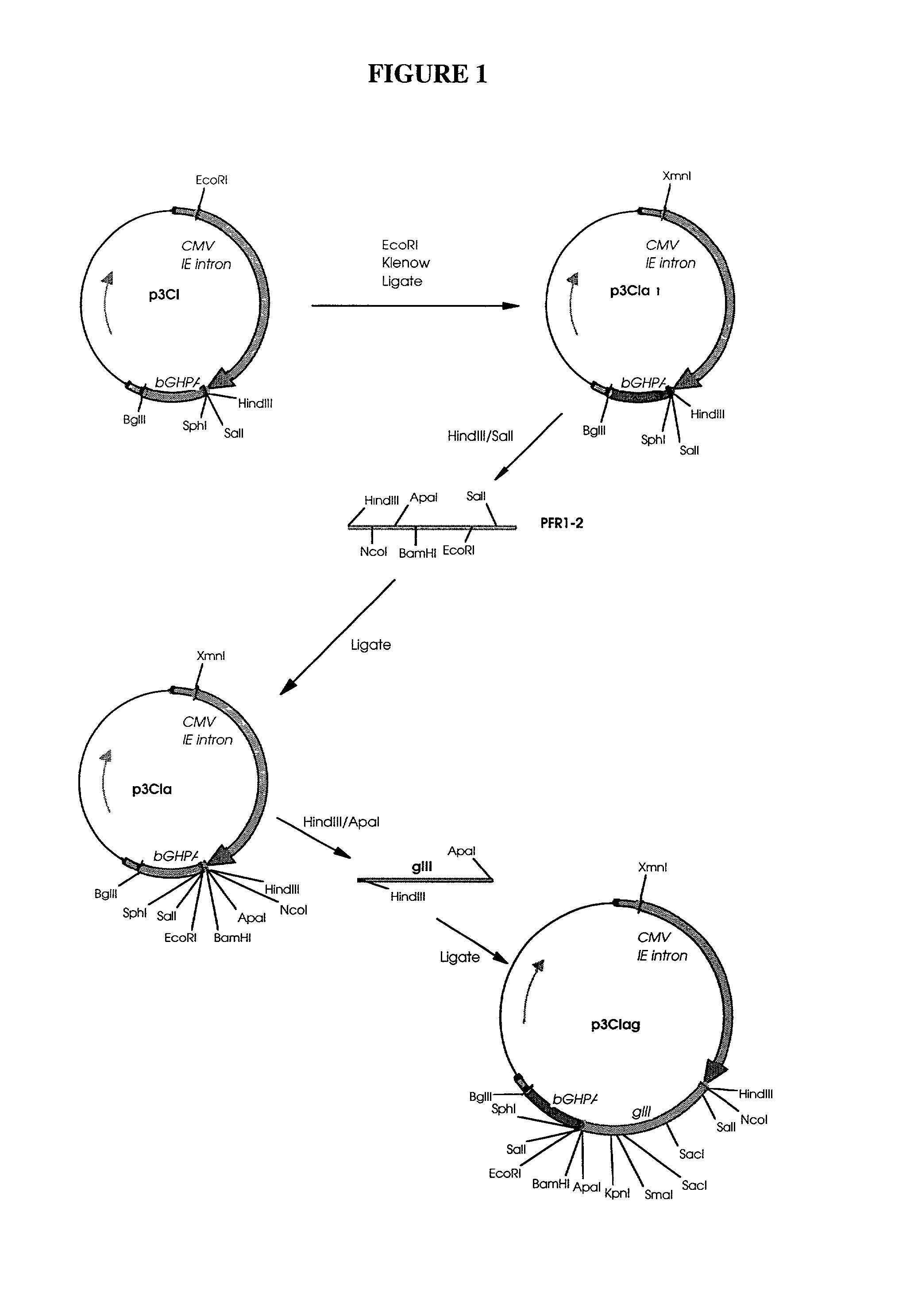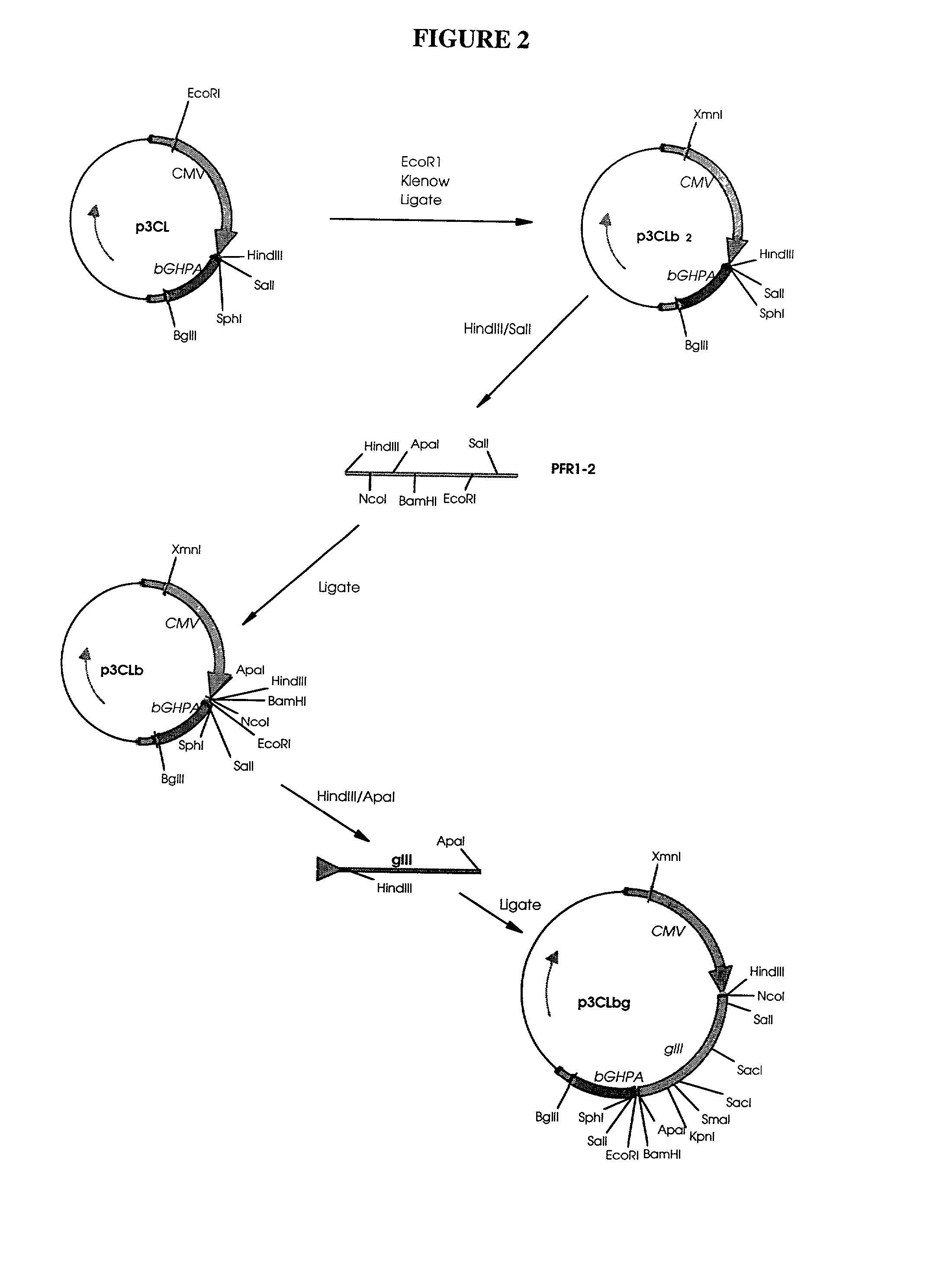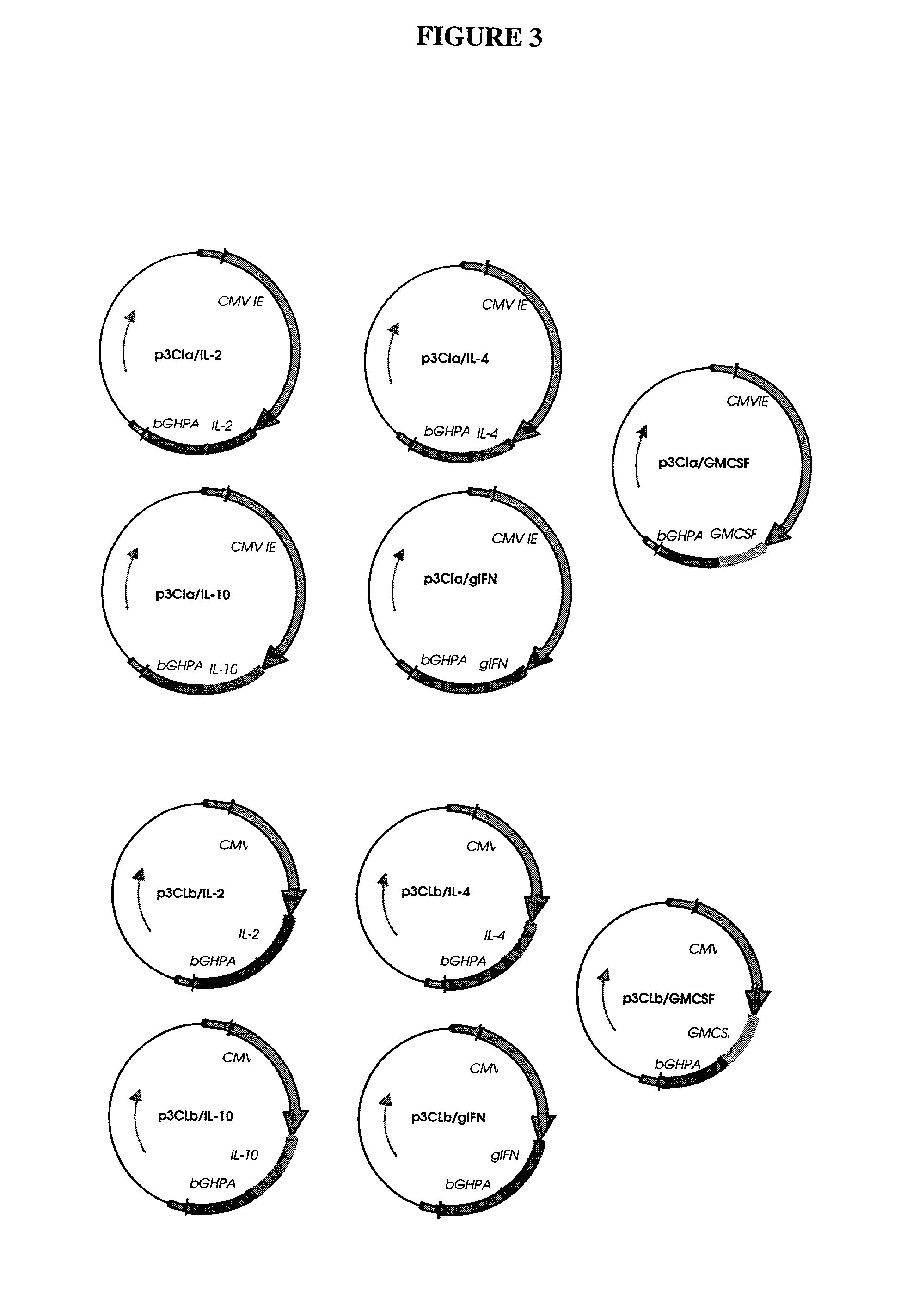Introduction of naked DNA or RNA encoding non-human vertebrate peptide hormones or cytokines into a non-human vertebrate
a technology of peptide hormones and vertebrate, which is applied in the field of naked dna or rna encoding non-human vertebrate peptide hormones or cytokines into a non-human vertebrate, can solve the problems of not being able to demonstrate very significant levels of the encoded gene product in vivo, genetic immunization may not produce enough protein to replace the endogenous levels and increase the levels above the normal physiological norm, and few outside researchers or us
- Summary
- Abstract
- Description
- Claims
- Application Information
AI Technical Summary
Problems solved by technology
Method used
Image
Examples
example 1
Preparation of Plasmids for the Expression of Porcine Cytokine Genes
[0038] Naked DNA technology may be used both for immunization (Donnelly, Ulmer et al. 1994; Hassett and Whitton 1996; Fazio 1997; Robinson, Ginsberg et al protein delivery system (Hengge, Chan et al. 1995; Wang, Chao et al. 1995; Lawson, Yeow et al. 1997). With the goal of using naked DNA technology to express regulatory molecules, such as cytokines, in swine, a series of plasmids designed to express the porcine cytokine genes for IL-2, IL-4, IL-10, IFNK, IL-1.upsilon., IL-5, IL-6, and GM-CSF were constructed.
[0039] Materials and Methods
[0040] Materials: Plasmid DNA was isolated from E. coli bacteria using NaOH / SDS with subsequent purification by either CsCl gradient centrifugation or QIAGEN columns. Fragments were electroeluted from agarose gels and purified using NACS52 PREPAC columns (GIBco BRL). All restriction and modification enzymes were used according to the manufacturer's specifications.
example 2
Injection of Plasmids Expressing Antigen Alone or Cytokine and Antigen Into Mice and Swine.
[0073] Naked DNA technology, or genetic immunization as it is now being called, is the spontaneous uptake and expression, by mammalian cells, of injected DNA, to produce an immune response. The technology has become very popular recently and has been applied to a wide variety of viruses as well as some bacteria and parasites (Lopez-Macias, Lopez-Hernandez et al. 1995; Yang, Waine et al. 1995; Huygen, Content et al. 1996; Tascon, Colston et al. 1996; Kurar and Splitter 1997; Lai, Pakes et al. 1997; Luke, Carner et al. 1997; Strugnell, Drew et al. 1997). Specific antibody production is almost always seen in response to the injections and is often accompanied by a CTL response. In many cases, this has led to protection, against challenge by the pathogen of interest (Robinson, Ginsberg et al. 1997).
[0074] Reports on the co-administration of cytokines and plasmid DNA suggest that it is possible to ...
example 3
Effect of Introduction of Naked DNA Encoding pST into Swine
[0113] Materials and Methods
[0114] Eighty weaned crossbred Yorkshire pigs (40 gilts and 40 barrows) were obtained from the PNU breeding herd. As the animals approached a body weight (BW) of 25-30 kg they were allotted by BW and gender into five blocks of eight pigs / gender. Within each block, two pigs / gender were assigned randomly to one of four pens / block. Pigs were allowed ad libitum access to a diet of 24% crude protein (CP) starting at the acclimation period (one week prior to administration of pST or genetic immunization). This amount of CP ensured that adequate amino acid was available in case there of a a reduction in voluntary feed intake caused by exogenous pST treatment. After a 7-d acclimation period the pigs were weighed (day 0) and then each pen of the animals within a block were either noninjected (control) or subjected to 42 daily i.m. injections of 1-2 mL of saline containing 60 .mu.g / mL of recombinant pST / kg ...
PUM
| Property | Measurement | Unit |
|---|---|---|
| concentration | aaaaa | aaaaa |
| volume | aaaaa | aaaaa |
| body weight | aaaaa | aaaaa |
Abstract
Description
Claims
Application Information
 Login to View More
Login to View More - R&D
- Intellectual Property
- Life Sciences
- Materials
- Tech Scout
- Unparalleled Data Quality
- Higher Quality Content
- 60% Fewer Hallucinations
Browse by: Latest US Patents, China's latest patents, Technical Efficacy Thesaurus, Application Domain, Technology Topic, Popular Technical Reports.
© 2025 PatSnap. All rights reserved.Legal|Privacy policy|Modern Slavery Act Transparency Statement|Sitemap|About US| Contact US: help@patsnap.com



